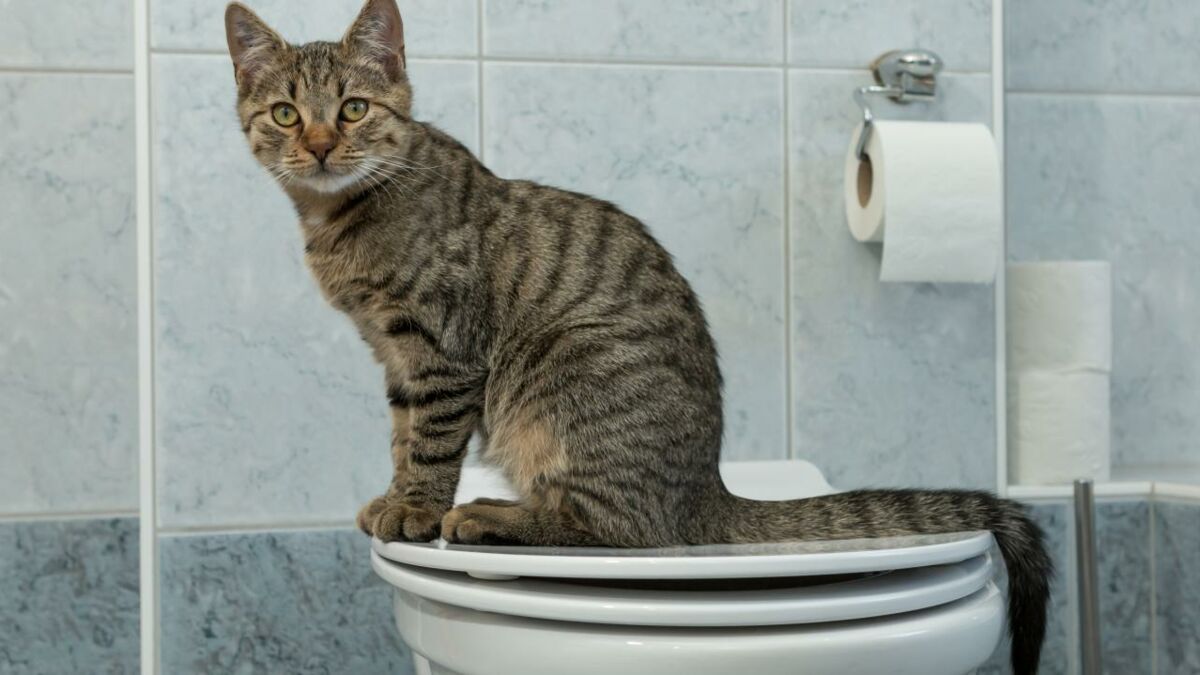Hazards of Flushing Cat Poop Down Your Toilet - Prevent Potential Problems
Hazards of Flushing Cat Poop Down Your Toilet - Prevent Potential Problems
Blog Article
Listed here below you can get some good facts in regards to Don’t flush cat feces down the toilet.

Introduction
As pet cat proprietors, it's important to be mindful of how we deal with our feline friends' waste. While it might seem convenient to flush feline poop down the bathroom, this technique can have harmful consequences for both the environment and human health.
Ecological Impact
Flushing cat poop presents harmful microorganisms and bloodsuckers into the water system, posing a considerable danger to aquatic ecosystems. These contaminants can negatively impact aquatic life and compromise water high quality.
Health and wellness Risks
In addition to environmental issues, purging cat waste can also present health dangers to humans. Feline feces might consist of Toxoplasma gondii, a bloodsucker that can trigger toxoplasmosis-- a possibly severe illness, particularly for pregnant females and people with damaged immune systems.
Alternatives to Flushing
The good news is, there are much safer and a lot more responsible means to throw away feline poop. Think about the complying with options:
1. Scoop and Dispose in Trash
The most common approach of throwing away feline poop is to scoop it into a naturally degradable bag and throw it in the garbage. Make sure to make use of a devoted trash inside story and get rid of the waste without delay.
2. Use Biodegradable Litter
Choose naturally degradable cat trash made from materials such as corn or wheat. These clutters are environmentally friendly and can be safely gotten rid of in the trash.
3. Hide in the Yard
If you have a yard, take into consideration burying pet cat waste in an assigned area far from veggie yards and water sources. Make sure to dig deep enough to stop contamination of groundwater.
4. Install a Pet Waste Disposal System
Buy a pet waste disposal system especially developed for feline waste. These systems use enzymes to break down the waste, lowering odor and environmental impact.
Verdict
Responsible pet dog ownership expands past supplying food and shelter-- it also involves appropriate waste monitoring. By refraining from flushing pet cat poop down the toilet and opting for different disposal methods, we can decrease our environmental footprint and shield human wellness.
Why Can’t I Flush Cat Poop?
It Spreads a Parasite
Cats are frequently infected with a parasite called toxoplasma gondii. The parasite causes an infection called toxoplasmosis. It is usually harmless to cats. The parasite only uses cat poop as a host for its eggs. Otherwise, the cat’s immune system usually keeps the infection at low enough levels to maintain its own health. But it does not stop the develop of eggs. These eggs are tiny and surprisingly tough. They may survive for a year before they begin to grow. But that’s the problem.
Our wastewater system is not designed to deal with toxoplasmosis eggs. Instead, most eggs will flush from your toilet into sewers and wastewater management plants. After the sewage is treated for many other harmful things in it, it is typically released into local rivers, lakes, or oceans. Here, the toxoplasmosis eggs can find new hosts, including starfish, crabs, otters, and many other wildlife. For many, this is a significant risk to their health. Toxoplasmosis can also end up infecting water sources that are important for agriculture, which means our deer, pigs, and sheep can get infected too.
Is There Risk to Humans?
There can be a risk to human life from flushing cat poop down the toilet. If you do so, the parasites from your cat’s poop can end up in shellfish, game animals, or livestock. If this meat is then served raw or undercooked, the people who eat it can get sick.
In fact, according to the CDC, 40 million people in the United States are infected with toxoplasma gondii. They get it from exposure to infected seafood, or from some kind of cat poop contamination, like drinking from a stream that is contaminated or touching anything that has come into contact with cat poop. That includes just cleaning a cat litter box.
Most people who get infected with these parasites will not develop any symptoms. However, for pregnant women or for those with compromised immune systems, the parasite can cause severe health problems.
How to Handle Cat Poop
The best way to handle cat poop is actually to clean the box more often. The eggs that the parasite sheds will not become active until one to five days after the cat poops. That means that if you clean daily, you’re much less likely to come into direct contact with infectious eggs.
That said, always dispose of cat poop in the garbage and not down the toilet. Wash your hands before and after you clean the litter box, and bring the bag of poop right outside to your garbage bins.
https://trenchlesssolutionsusa.com/why-cant-i-flush-cat-poop/

Do you really like more info about Can You Flush Cat Poo or Litter Down the Toilet?? Post a remark down below. We'd be interested to know your thoughts about this blog post. Hoping that you visit us again before long. Liked our blog? Please share it. Let another person check it out. We appreciate reading our article about Don’t flush cat feces down the toilet.
Services Report this page